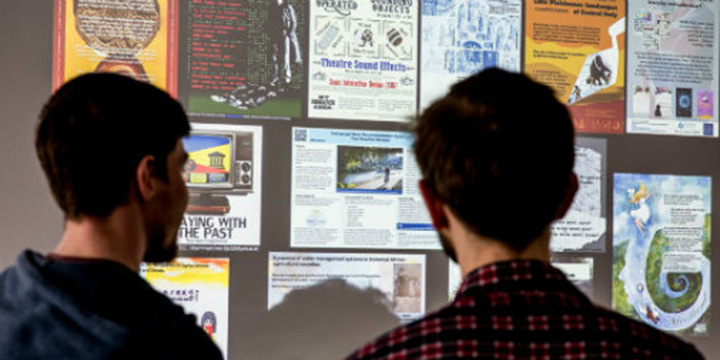
HRC PhD poster competition
Win a cash prize with your research
The HRC runs a poster competition with cash prizes, which gives PhD students in the arts and humanities the opportunity to test their skills in communicating their research beyond their own discipline.
Why enter?
Producing a poster can be a very useful way of clarifying your doctoral project, not only to others, but also to yourself. It will also give you practical experience in communicating your research in an accessible and eye-catching format to different audiences.
The competition is a great way to learn more about our interdisciplinary research community, make contact with people working in cognate areas, while discovering more about the huge and exciting range of postgraduate arts and humanities research projects being carried out at York.
Who is eligible to enter?
Any current PhD student from the Departments of Archaeology, English, History, History of Art, Philosophy, Language and Linguistic Science, Music, School of Arts and Creative Technologies and the Centre for Medieval Studies may enter. The only students not eligible are the winners from last year's poster competition.
Judging and exhibition
The competition will be judged by a panel chaired by the HRC Deputy Director, Jonathan Finch, and we will display the printed posters at a celebratory event during the afternoon on Wednesday 1 May.
Entry requirements
Please submit an A2 size PDF poster to hrc-admin@york.ac.uk by 12 noon on Monday 15 April 2024.
Tips for designing your poster
- Think visually. Aim for visual impact and readability
- Target a non-specialist audience who knows nothing about your research area
- Use layout, image, and colour to communicate your research
- Avoid cramming the page. Use space to guide the reader’s eye
- Use images if you can. Avoid low resolution images that will look pixelated when printed
- Use colour for visual appeal, and to highlight key points or make connections
- Use colour carefully. Dark text on light backgrounds is easier to read
- Keep text to a minimum (~ 300 words max. Less is more here)
- Break text into small portions
- Leave breathing space around your text
- Ensure font sizes are large enough to read
- UPPER CASE TYPE IS HARDER TO READ
- Left-aligned text is easier to read than fully justified text
- Avoid jargon
- Include your name
- Proof read carefully
How to start making your poster
You can design your poster in PowerPoint
Go to Design > Page set up
In the drop-down menu for ‘slides size’, choose ‘custom’, enter the dimensions for A2 paper (42.0 and 59.4 cm) and then select portrait or landscape
When your poster is finished, go to File > Save and Send > Create PDF/XPS Document
Poster design resources
For inspiration, check out our previous HRC poster competition winners.
The Electronic Textuality and Theory Group's blog at Western University gives tips on designing posters for the arts and humanities.
The American Historical Association also gives some tips on why and how to design an effective humanities poster, as well as a post from the winner of their 2015 poster competition on why they found presenting a poster at a conference useful.
Try these tips from blogger Colin Purrington. The blog mainly focuses on academic posters for specialist conferences, but many of their tips are also applicable to posters designed for non-specialist audiences.
View previous winning poster designs
Finalists for our 2023 poster competition
We look forward to receiving your entries!
